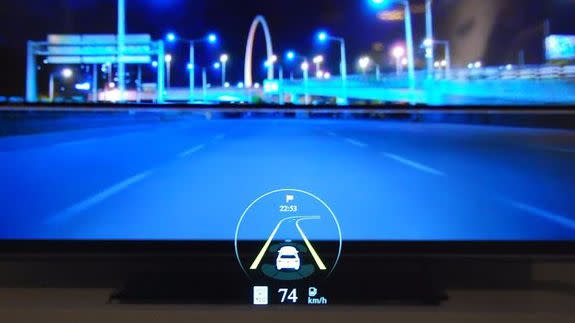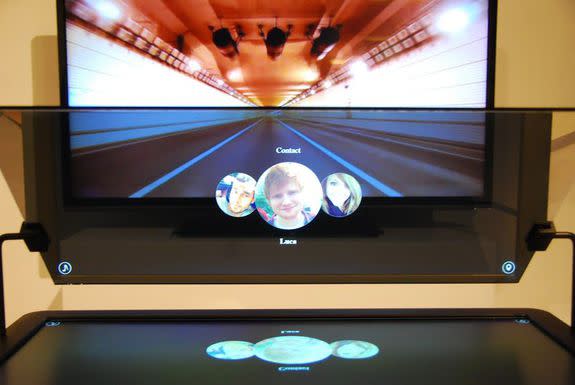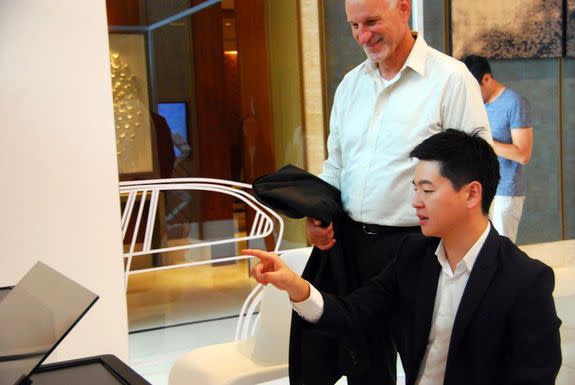Future car displays will let drivers point at the windscreen and swipe to select the next song

SEOUL, South Korea — The auto industry has struggled with finding an efficient and safe way to operate digital interfaces in cars. While we've seen prototypes of great-looking HUDs (heads-up displays) in high-end vehicles from makers like BMW and Tesla, this preview of a mass market dashboard display offers a peek into what everyone can look forward to in the near future.
Seoul-based startup VTouch has been supplying its gesture-based interactive displays for the past few years. Its tech uses eye and finger tracking with a 3D camera to allow users to do stuff like point at a light to turn it on, or wave at a large outdoor display to control it.
SEE ALSO: BMW debuts laser headlight and head-up display helmet for motorcycles
Now, it's tied up with domestic partners Kia and Hyundai to research smart dashboards. VTouch is aiming to make its gesture-based HUDs a commercial reality by end-2017.
The display above the dashboard will let the driver swipe through options to play music, make calls, set navigation or cruise control, for starters.
“When you control the system (via) buttons on a console or the wheel...there are more distractions because you have to look at (the buttons),” said VTouch’s co-CEO Nathan Kim, of the benefits of a display overlaid onto the windshield.
BMW’s own gesture-controlled interface, on the center consoles of its 7-Series flagship sedan and futuristic i8 electric sports car revealed this year, incorporates a full menu of gestures.

Image: elaine ramirez/mashable
VTouch’s interface leans more on swiping gestures, allowing the driver to flick a finger while keeping their hands close to the wheel.
These technologies come as the industry has leaned on other often less-than-satisfactory input methods such as voice command for years. Some research suggests voice control actually contributes to distracting the driver.
Kim adds that there are situations when it’s not the best option, such as when the kids in the back are sleeping or when the user must scroll through several options to find the right song or phone book contact. And gesture tech could open up hands-free options to drivers with heavy accents or with speaking disabilities.

Image: ELAINE RAMIREZ/MASHABLE
Hands on with the prototype
When I tried VTouch's demo, the interface felt intuitive and responsive in the controlled environment, but not ergonomically comfortable.
The company claims a clicking accuracy of nearly 99 percent, but the demo I went through was unresponsive based on whether I changed sitting positions. The company boasts its cursor-free interface makes selecting simpler, but the experience can be tiring.

Image: ELAINE RAMIREZ/MASHABLE
Likewise, there are complications to gesture technology, such as operating in low light conditions and responding to various user habits, like the different ways people point their finger.
The company is using machine learning to analyze user data and grapple with these problems before the system gets commercialized.
“I want our system everywhere. It could be a standard for controlling things. Everything is controlled with switches, but I think it could be something else in the future,” said Kim.

Image: ELAINE RAMIREZ/MASHABLE
